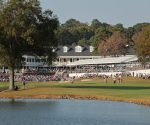The PGA Tour just canceled its opener. Is there more to the story?

The PGA Tour announced on Wednesday that its 2026 season opener, the Sentry, is canceled.
Curiously, it wasn’t the only Kapalua-related announcement on Wednesday. The Plantation Course – the pride of Maui and longtime host to the first event of the Tour’s calendar season – added a banner to its website trumpeting the fact that it’s now booking tee times after closing the course for two months.
So what on earth is going on?
This is a story of drought, of course conditions and of Hawaiian politics. But it has also become a story about the PGA Tour’s future, about its vision and its strategy and its relationships with markets and sponsors. Let’s talk through a few of the complicating factors together, Q&A-style.
Wait – why aren’t they having the Sentry at Kapalua like they normally do?
The simplest answer is that water restrictions on Maui (resulting from a combination of drought, infrastructure, streams, ditches, lawsuits, finger-pointing and more) called into question the course’s readiness to host a premier field in January. Tournament officials and PGA Tour representatives deliberated and ultimately decided last month that the Sentry wouldn’t happen as scheduled.
An earlier release on the decision cited conditioning concerns and explained that they pulled the plug early because of “logistical complexities unique to staging a tournament on the island of Maui.”
“These include shipping deadlines, vendor coordination and tournament infrastructure build-out – all of which are intensified by the island's remote location,” the Tour wrote.
So how bad is the course, really?
Honestly? If you’ve seen posts of browned-out fairways on social media, it’s probably not as bad as you’d think. There are two courses at Kapalua, the Plantation and the Bay, and the resort has doubled down on its efforts to revitalize the Plantation – while some of the more viral images, like the one below, have been from the sepia-toned Bay.
As for the Plantation Course? They have a live view of the first tee which you can check out here, and below is a screenshot from Wednesday afternoon ET.

This is hardly proof of anything; we don’t have up-close looks at how well grass has grown in on the greens, for instance. But we’re still two-plus months from the start of the tournament. If everybody involved had been committed to the idea that the Sentry must be played at Kapalua this year, it seems like they could have done so. One way to think about this is that Tour doesn’t like uncertainty. Combining complex local politics with the uncertainty of the course conditions and everything required to get equipment, vending and personnel to Maui contributed to pulling the plug.
Wait, so why not have it somewhere else?
Good question! There was talk of holding the Sentry elsewhere. Torrey Pines, which served as fill-in host for last year’s Genesis, was a possibility, as were other options, from Palm Springs to Florida. Ultimately, those in charge decided that the logistical challenges of pulling together a last-minute replacement venue weren’t worth it. That’s not a particularly satisfying answer, but another way to think about it is this: The Tour and this tournament are each in reset mode. It wasn’t worth pulling out all the stops to make the Sentry happen in a less-than-satisfactory way.
There was also this comment from Sentry’s Stephanie Smith in the release:
"The Sentry is a jewel in the PGA Tour schedule," said Smith, chief marketing and brand officer and chief golf partnership officer at Sentry. "We were determined to find a way to play a signature level event in 2026 – one that honored the tournament's tradition and provided the quality of competition that players and fans have come to expect. Despite the Tour’s best efforts, it became impossible to do that. Sentry is committed to our long-term relationship with the Tour – which runs through 2035 – and the Sentry's place as a prominent event. While 2026 will not turn out as we would have liked, we're optimistic about the future."
Are there other complicating factors?
There are! One is the fact that the Sentry is no longer the only early-January competition on the golf calendar. The DP World Tour’s 2026 Dubai Invitational is scheduled for the week after the Sentry (Jan. 15-18) and has already gotten commitments from Rory McIlroy and Tommy Fleetwood; they’re also among the top Europeans expected at the following week’s Hero Dubai Desert Classic (Jan. 22-25).
There’s also TGL, which kicks off in Florida on Sunday, Dec. 28, and then features matches on Monday or Tuesday every week of January – which raised eyebrows when the schedule was released, given it’s tough to combine a Tuesday TGL match with a Thursday tournament tee time in Hawaii.
So … where does the PGA Tour season start?
Technically the first PGA Tour event of the season will be the Sony Open in Hawaii, with balls in the air for the first round on Jan. 15. But it may not feel quite like the full-on PGA Tour will be underway; top pros who typically island-hop from the Sentry to the Sony may not make the trip at all.
It’ll be interesting to see if we get a beefed-up field when the Tour returns to the mainland with the American Express in Palm Springs Jan. 22-25. That’s followed by the Farmers Insurance Open at Torrey Pines (Jan. 29-Feb. 1) and the WM Phoenix Open (Feb. 5-8) before, at last, the first Signature Event, the AT&T Pebble Beach Pro-Am (Feb. 12-15). From there, things will hit warp speed (eight Signature Events plus the Players and all four majors in the next 23 weeks). But it’s an admittedly slower start with the Sentry off the schedule.
Does this mean the end of PGA Tour golf in Hawaii?
The answer there is a very definitive maybe. There have been no final decisions made about the future of the Sentry nor Sony, but the Tour appears to be assessing all its options – and has been clear about the built-in challenges that come with hosting pro events in Hawaii.
On the one hand, there’s a long tradition of early season tournament golf in Hawaii. Cold-weather golf fans have grown to love being transported to Kapalua’s epic Hawaiian hillsides for primetime viewing the first week of the year. Players who make the trek love starting their seasons there and love bringing their families, too. And Sentry recently extended its partnership with the Tour and that kickoff event through 2035.
On the other hand, having a massive golf tournament on a remote island chain is expensive. It’s a logistical challenge from tournament operations and TV production standpoints. And Hawaii doesn’t have the population centers of its mainland counterparts, making revenue generation tougher. Reading between the lines of the Tour’s statement, it sounds committed to its relationship with Sentry (“a tremendous partner of ours”) but avoided any mention of the tournament’s future at Kapalua. Add in the fact that Sony’s deal expires in 2026, combine that with the Tour’s new leadership, and it’s easy to imagine a world where the season begins somewhere else – and somewhere easier to get to.
What does this mean for the future of the PGA Tour?
Nothing, yet. But it’s a reminder that change is coming. That everything is being assessed. That the Future Competition Committee, chaired by Tiger Woods, has been tasked with creating the Tour’s “optimal competitive model.” As new PGA Tour CEO Brian Rolapp said in August:
"The goal is not incremental change. The goal is significant change."
That committee also includes Tour pros Patrick Cantlay, Adam Scott, Camilo Villegas, Maverick McNealy and Keith Mitchell – as well as ex-Valero CEO Joe Gorder, Fenway Sports Group’s John Henry and baseball-executive-turned-sports-visionary Theo Epstein. They’ll have more to say, in time.
For now all we know for sure is that the first Tour event of 2026 is off the schedule. We can only guess at what changes come next.
The post The PGA Tour just canceled its opener. Is there more to the story? appeared first on Golf.










